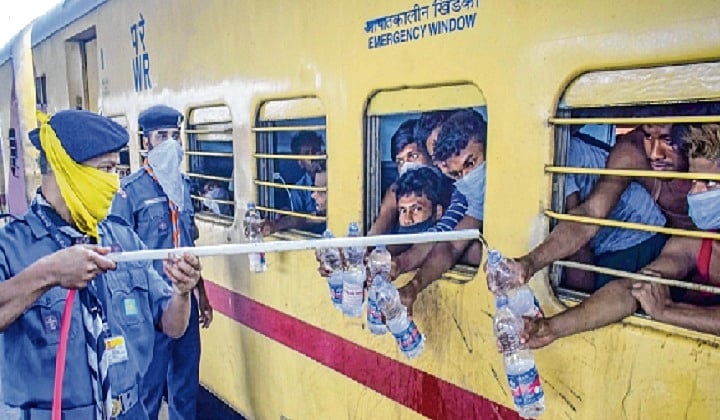The railways are adding special trains to the northern states as demand from passengers have gone up. The railways are conducting checks before allowing passengers to enter the rail premises from stations of Chhatrapati Shivaji Maharaj Terminus (CSMT) and Kurla Lokmanya Tilak Terminus (LTT). The numbers of passengers with valid tickets going to states like Uttar Pradesh, Bihar and other states have gone up substantially.
In the last couple of days, the Central Railway have made provisions for additional Special trains from Mumbai to Gorakhpur, Patna, Darbhanga, Faizabad, Karaikal, Burhanpur, Bhusaval, Khandwa and Pune to Danapur. Some of these trains are Mumbai-Gorakhpur Special that will start from April 7, April 13 onwards having major halts in various cities and towns. The Mumbai-Patna Special superfast will leave CSMT from April 12.
Sources in Central Railway said that these 18 to 20 coach trains will namely have majority of non-AC Sleeper coaches and even second seating ones. The Kurla LTT-Faizabad will be Bi-weekly Superfast Special that will start from April 14. The Kurla LTT-Karaikal Weekly Special will start from April 17. The rail authorities claim that in the coming months, the wedding season will begin and so this rushes apart from the lockdown.
“This time the reverse migration is not sudden like last year where people are travelling without tickets. All these people are passengers with valid tickets. They are being asked to form proper queue and then after checking being allowed to enter,” said a CR official.
Meanwhile, many of the drivers are fleeing Mumbai, say the drivers' unions, and the number of taxis and auto rickshaws on the roads are also dropping. Likewise, the number of aggregator cabs has also dropped. As per the new guidelines, only two passengers are allowed inside auto rickshaw, 50 percent of car’s capacity for a black and yellow taxi and aggregator cab operator.
The number of black and yellow cabs on the road is around 20,000 though the total number of registered ones is around 36,000 taxis. Likewise, of the 2.50 lakh autos registered, there are around 1.50 lakh or so that are on road. The unions expect these numbers to drop further as drivers are going back to their native homes.
“The number of taxis on the road has come down to 15,000 or so. Many of our drivers have or are returning to their hometowns over fear of another lockdown,” said AL Quadros, senior trade union leader.
There were close to 1.50 lakh drivers riding black and yellow taxis of which currently it has dropped by 50 percent and is expected to drop further in days to come. This would ideally mean that taxis on road would decrease too thus causing inconvenience to daily commuters.







